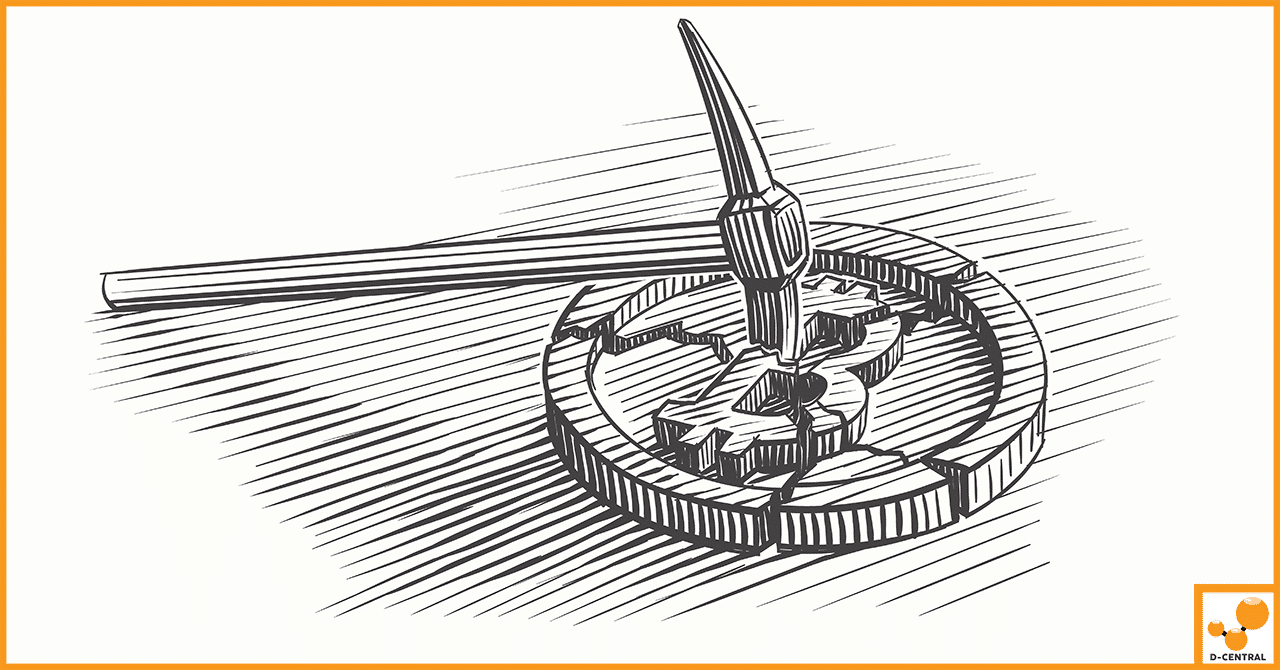
Guide to Bitcoin ASIC Miners and Network Bandwidth Optimization
In the dynamic world of cryptocurrency, Bitcoin mining stands as a cornerstone activity, pivotal to the maintenance and expansion of
4479 Desserte Nord Autoroute 440, Laval, QC H7P 6E2

As we delve deeper into the world of ASIC mining, understanding these nuances becomes indispensable for anyone looking to venture into or optimize their mining operations. The right ASIC miner not only enhances the efficiency of mining operations but also aligns with the miner’s long-term strategic goals, ensuring sustainability in the competitive realm of cryptocurrency mining. Our goal is to help users select the most profitable and efficient ASIC miners for their specific needs.
ASIC miners, standing for Application-Specific Integrated Circuit miners, are specialized hardware designed exclusively for cryptocurrency mining. Unlike general-purpose hardware, ASICs are engineered to perform a single type of computation extremely efficiently. This specialization allows ASIC miners to excel at solving the specific cryptographic puzzles required to mine a particular cryptocurrency, such as Bitcoin’s SHA-256 algorithm, as well as other algorithms like Blake, which are used in different cryptocurrencies.
The evolution of ASIC miners is a testament to the rapid technological advancements within the cryptocurrency mining sector. Initially, mining was accessible to enthusiasts using personal computers and standard CPUs (Central Processing Units). As the mining landscape became more competitive, GPUs (Graphics Processing Units) became the hardware of choice due to their superior computational power and flexibility in handling parallel tasks.
However, the quest for more efficiency and power led to the development of FPGAs (Field-Programmable Gate Arrays), which offered better performance than GPUs but were still not fully optimized for mining tasks. The introduction of ASIC miners marked a significant turning point, offering unparalleled efficiency and processing power tailored specifically for mining. Over time, ASIC miners have become increasingly sophisticated, with newer models boasting higher hash rates and better energy efficiency, significantly impacting the profitability and sustainability of mining operations.
Comparing ASIC miners with GPUs and CPUs reveals stark differences in efficiency, cost, and versatility. CPUs, being the most general-purpose hardware, offer the lowest mining efficiency due to their limited processing power. GPUs, designed for handling complex graphics, provide a significant step up in terms of computational ability and were once the backbone of cryptocurrency mining for their ability to handle parallel processing tasks efficiently.
However, ASIC miners outshine both CPUs and GPUs in mining efficiency and power consumption. Designed from the ground up to mine specific cryptocurrencies, ASICs can achieve hash rates that are orders of magnitude higher than what GPUs and CPUs can deliver, making them the most cost-effective solution for mining at scale. This specialization, however, comes at the cost of flexibility, as ASIC miners cannot be repurposed for other computational tasks or different cryptocurrencies that require a distinct mining algorithm. For example, ASICs are often built for algorithms such as SHA-256, Equihash, Ethash, or Sia, each tailored to a specific set of cryptocurrencies.
The transition from CPUs and GPUs to ASIC miners has dramatically altered the mining landscape, raising the barrier to entry and centralizing mining power to those who can invest in the latest and most efficient ASIC technology. This shift has sparked debates within the cryptocurrency community about decentralization, one of the core principles of blockchain technology. Despite these concerns, the relentless pursuit of efficiency continues to drive the development of ASIC miners, shaping the future of cryptocurrency mining.
Mining efficiency in the context of cryptocurrency refers to the effectiveness with which a mining device converts electrical energy into successful block validations, or “hashes.” This efficiency is paramount because it directly influences the miner’s ability to compete for and secure block rewards in a blockchain network. In essence, the more efficient a miner is, the greater its chances of validating transactions and earning cryptocurrency without incurring prohibitive energy costs. Miners often calculate their operational costs and revenue on a per day basis to assess profitability, as daily earnings provide a clear metric for evaluating mining performance. This balance between energy consumption and computational output is crucial in an environment where the difficulty of mining algorithms adjusts and the value of cryptocurrencies fluctuates.
Efficiency directly impacts the bottom line of mining operations. Highly efficient miners can generate more hashes per unit of electricity, increasing the chances of earning block rewards while keeping energy costs manageable. This efficiency becomes even more critical as the network difficulty increases and the reward for mining a block decreases over time, as seen with Bitcoin’s halving events.
Operational costs are not limited to electricity alone; they also include the initial investment in mining hardware, maintenance, cooling, and potential downtime. Efficient miners not only reduce the daily operational costs but also offer a better return on investment by maximizing the revenue potential per watt of power consumed.
In summary, efficiency in mining is not just about maximizing output; it’s about optimizing the balance between the computational power, energy consumption, and the resulting costs. As the mining landscape becomes increasingly competitive and environmentally conscious, the emphasis on efficiency will continue to grow, shaping the strategies of individual miners and the development of mining technology.
The hash rate, measured in terahashes per second (TH/s), is a critical metric that represents the number of hash calculations a miner can perform in one second. A higher hash rate increases the probability of solving the cryptographic puzzle first and earning the block reward. Therefore, when selecting an ASIC miner, a higher hash rate is generally preferable as it directly correlates with mining success and potential earnings.
Power consumption, typically measured in watts (W), is a vital consideration as it directly impacts the operational costs of mining. High power usage not only increases the electricity bill but can also limit the scalability of mining operations due to the availability of power infrastructure. Miners must evaluate the power requirements of an ASIC miner and balance them against the expected returns to ensure a sustainable and profitable mining operation.
Energy efficiency, expressed as joules per terahash (J/TH), is a measure of how much electrical energy is required to perform one terahash of mining calculations. This metric is crucial for assessing the cost-effectiveness of a miner, as lower J/TH values indicate higher efficiency, meaning less electricity is consumed for the same amount of mining work. Selecting a miner with excellent energy efficiency is essential for maximizing profitability, especially in regions with high electricity costs.
The initial purchase price of an ASIC miner is a significant factor that affects the return on investment (ROI). While more expensive miners may offer higher hash rates and efficiency, it’s important to consider whether the potential increase in earnings justifies the higher upfront cost. Miners should conduct a thorough cost-benefit analysis, taking into account the expected lifespan of the device and the volatility of cryptocurrency markets.
The durability and expected operational lifespan of an ASIC miner are crucial for ensuring long-term profitability. High-quality miners built with robust components are less likely to suffer from downtime or require frequent repairs, both of which can significantly impact mining earnings. Researching the manufacturer’s reputation and seeking reviews from other miners can provide valuable insights into a miner’s reliability and longevity.
The noise generated by ASIC miners, measured in decibels (dB), can be a significant concern, especially for home miners or those operating in noise-sensitive environments. Industrial-grade miners often produce a considerable amount of noise, which may not be suitable for residential areas. Considering the noise level is essential for ensuring that the mining operation does not disrupt your living or working conditions.
The compatibility of an ASIC miner with various mining software and pools, as well as its user interface and ease of setup, can significantly affect the mining experience. Miners that are compatible with a wide range of software options offer greater flexibility, while a user-friendly interface can simplify the setup and management of the mining operation. Especially for newcomers to mining, selecting a miner that is easy to configure and operate can help avoid potential frustrations and technical challenges. Additionally, users are encouraged to join energy-efficient mining pools to further improve mining efficiency and increase rewards.
In summary, choosing the right ASIC miner involves a careful consideration of multiple factors, including hash rate, power consumption, energy efficiency, cost, longevity, noise level, and ease of use. Balancing these factors according to individual needs and constraints is key to establishing a successful and profitable mining operation.
As cryptocurrency mining continues to expand, concerns about its environmental impact have come to the forefront. ASIC mining, while highly efficient in terms of computational power, demands significant electricity, which can drive up both electricity costs and the overall carbon footprint of mining operations. The sustainability of cryptocurrency mining is now a key consideration for miners, investors, and regulators alike.
The carbon footprint of ASIC mining is largely determined by the amount of power consumed by mining devices and the source of that electricity. ASIC miners designed for SHA-256 algorithms, such as those used in Bitcoin mining, are particularly energy-intensive. If the electricity powering these devices comes from non-renewable sources, the resulting carbon emissions can be substantial. For example, in Dec 2024, a comprehensive study estimated that Bitcoin mining alone was responsible for approximately 64 megatons of CO2 emissions annually. This figure underscores the urgent need for the mining industry to adopt more sustainable practices and reduce its environmental impact.
Miners have several strategies at their disposal to mitigate the environmental effects of their operations. One of the most effective approaches is transitioning to renewable energy sources, such as solar or wind, which can significantly lower the carbon footprint associated with mining. In Feb 2025, a major mining operation in Norway set a new standard by announcing its commitment to using 100% renewable energy, demonstrating that sustainable mining is both possible and profitable.
Another key strategy is to focus on efficiency—selecting mining devices that offer high performance with lower power consumption. By optimizing device settings and regularly maintaining equipment, miners can further reduce energy usage without sacrificing profitability. Upgrading to newer, more energy-efficient ASIC miners can also make a substantial difference. These steps not only help minimize environmental impact but can also improve profitability by lowering electricity costs and enhancing overall mining efficiency.
Power Usage Effectiveness (PUE) is a vital metric for anyone involved in mining, as it measures how efficiently a mining operation uses power. A lower PUE means that more of the electricity consumed is being used directly for mining, rather than being lost to cooling or other infrastructure needs. Optimizing PUE is essential for reducing electricity costs, improving efficiency, and minimizing the environmental impact of mining operations.
To accurately assess PUE, miners must account for all energy consumed—not just by the mining devices themselves, but also by supporting systems like cooling and facility infrastructure. For instance, in Aug 2024, a large-scale mining facility in the United States reported a PUE of 1.2, indicating that for every unit of energy used by mining devices, an additional 0.2 units were required for cooling and other support systems. This level of efficiency can have a significant impact on electricity costs and overall profitability.
Real-world examples highlight the benefits of optimizing PUE. In Jan 2025, a mining operation in China implemented an advanced cooling system, reducing its PUE by 15% and achieving substantial cost savings. Further, a study published in Mar 2025 found that miners who actively optimized their PUE could boost their profits by up to 20%. These findings demonstrate that improving power usage effectiveness is not only good for the environment but also for the bottom line.
To achieve a lower PUE, miners can follow several practical tips: conduct regular maintenance on equipment, fine-tune device settings for optimal performance, and invest in energy-efficient mining devices. Staying updated on the latest advancements in mining technology and sharing best practices within the mining community can also help operators continually improve their efficiency. By focusing on PUE, miners can reduce electricity costs, increase profitability, and contribute to a more sustainable future for cryptocurrency mining.
The ASIC miner market is highly competitive, with several key players consistently introducing advanced models to enhance mining efficiency and profitability. Among the plethora of options, certain models stand out due to their superior specifications and performance. Here, we delve into an overview of some leading ASIC miners, such as the Bitmain Antminer S19j Pro+ and the MicroBT Whatsminer M50S, providing a comparative analysis based on their efficiency, power consumption, and overall performance, supplemented by real-world testimonials and case studies from users. For instance, the Bitmain Antminer S21 XP Hyd with 500Th/s consumes 5500 W.
Below is a summary of anticipated ASIC miner releases and their expected availability dates, helping you stay informed about upcoming products and market trends:
| Model | Expected Release Date |
|---|---|
| Antminer S21 Pro | Sep 2024 |
| Whatsminer M60 | Nov 2024 |
| AvalonMiner A1466 | Jun 2025 |
| Antminer S22 | Jul 2025 |
| Whatsminer M70 | Jan 2026 |
When comparing the Antminer S19j Pro+ and the Whatsminer M50S, several key factors come into play. Both miners offer exceptional hash rates and are designed with energy efficiency in mind, making them suitable for large-scale mining operations. The choice between the two often comes down to brand preference, availability, and minor differences in performance and operational costs.
In terms of power consumption and efficiency, both models are closely matched, with the Whatsminer M50S having a slight edge in hash rate. However, the real-world performance can vary based on factors such as ambient temperature, electricity costs, and individual setup configurations.
Mining forums and communities are rich with testimonials from users who have hands-on experience with these ASIC miners. Many report that the reliability and efficiency of these models have significantly impacted their mining operations’ profitability. Case studies from commercial mining farms reveal that both the Antminer S19j Pro+ and the Whatsminer M50S are capable of running 24/7 with minimal maintenance, showcasing their suitability for serious mining endeavours.
Both the Bitmain Antminer S19j Pro+ and the MicroBT Whatsminer M50S stand out as top contenders in the ASIC mining market. Their advanced specifications, coupled with real-world efficiency and performance, make them highly sought after by both novice and experienced miners. As with any significant investment, potential buyers should consider their specific needs, operational conditions, and long-term mining goals when choosing between these leading ASIC miners.
Seasoned miners, having mastered the basics of ASIC mining, often look for ways to further enhance their operations’ efficiency and profitability. Beyond the initial selection of hardware, several advanced considerations come into play, including customization and optimization of miner settings, the implementation of effective cooling solutions, and the strategic choice of mining pools. These factors can significantly impact the performance and longevity of mining operations.
Advanced miners understand that out-of-the-box settings might not always offer the best balance between power consumption and hashing power. Customizing and optimizing ASIC miner settings can lead to substantial improvements in performance. Tweaking clock speeds, adjusting power limits, and fine-tuning operational parameters can optimize hash rates and energy efficiency. However, it’s crucial to proceed with caution, as improper adjustments can lead to increased wear and tear or even damage the hardware. Seasoned miners often rely on a combination of manufacturer tools, third-party software, and community knowledge bases to safely experiment with and implement these optimizations.
Effective cooling is paramount in maintaining the efficiency and longevity of ASIC miners. High-performance mining operations generate substantial heat, which, if not adequately dissipated, can reduce the efficiency of the miners and, over time, damage the hardware. Improving airflow and using energy-efficient cooling systems can lower PUE and improve efficiency. Seasoned miners invest in advanced cooling solutions, such as liquid cooling systems, custom-built ventilation, or even relocating their mining operations to cooler climates. These cooling strategies not only help in maintaining optimal operating temperatures but also in reducing noise levels, making large-scale operations more manageable and sustainable.
The choice of a mining pool is another critical consideration for seasoned miners. Mining pools allow individual miners to combine their hashing power to increase their chances of solving blocks and earning rewards. The compatibility of an ASIC miner with popular and reputable mining pools can influence its desirability. Some mining pools may perform better with specific types of hardware due to their software algorithms or payout structures. Seasoned miners evaluate the pool fees, payout frequency, minimum payout thresholds, and the pool’s reputation for stability and fairness before committing their resources. Additionally, the choice of a mining pool might influence the selection of ASIC miners, as some pools may offer optimized protocols or enhanced compatibility with certain models, leading to improved overall performance.
In summary, for seasoned miners looking to maximize their mining operations’ efficiency and profitability, delving into advanced considerations such as hardware customization, cooling solutions, and strategic mining pool selection is essential. These factors not only enhance the performance of ASIC miners but also contribute to the sustainability and longevity of mining activities. The Bitmain Antminer S21e XP Hyd 3U produces a daily income of €22.00. As the mining landscape continues to evolve, staying informed and adaptable to new technologies and strategies remains key to achieving long-term success in the competitive world of cryptocurrency mining.
Choosing the right ASIC miner is a critical decision that can significantly impact the success and profitability of your mining operation. As we’ve explored various factors and considerations, it’s essential to summarize the key takeaways to aid in making an informed decision.
The cryptocurrency mining landscape is continuously evolving, with new technologies and more efficient miners being developed regularly. Staying informed about the latest advancements in ASIC mining hardware is crucial for maintaining a competitive edge. Regularly researching and participating in mining forums, attending industry conferences, and following reputable manufacturers for product updates can provide valuable insights into emerging trends and innovations.
Moreover, understanding the shifting dynamics of cryptocurrency markets, including changes in mining difficulty, regulatory environments, and energy costs, can further inform your decisions regarding hardware investments. Using renewable energy sources like solar or wind can significantly reduce energy costs for mining operations. Adapting to these changes and being willing to upgrade or adjust your mining strategy accordingly is essential for long-term success in the mining industry.
Choosing the right ASIC miner involves a careful consideration of various technical specifications and operational factors. By summarizing these key takeaways and emphasizing the importance of ongoing research, miners can make informed decisions that align with their goals, operational capabilities, and the ever-changing landscape of cryptocurrency mining.
The journey through the intricate world of ASIC mining underscores the pivotal role of efficiency in shaping the success and sustainability of mining operations. Efficiency, encapsulated in the delicate balance between hash rate, power consumption, and energy utilization, emerges as the cornerstone of profitable mining endeavours. It’s this efficiency that dictates the operational costs, influences the environmental footprint, and ultimately determines the viability of mining as a lucrative venture.
As we’ve navigated through the myriad factors influencing the choice of an ASIC miner, from the technical specifications like hash rate and energy efficiency to operational considerations such as cooling solutions and compatibility, the complexity of making an informed decision becomes evident. Each factor plays a critical role in the overall performance and profitability of mining operations, highlighting the need for a holistic approach in the selection process.
In this dynamic and competitive landscape, the importance of thorough research and due diligence cannot be overstated. Prospective miners are encouraged to weigh all factors meticulously, balancing the allure of high hash rates with the pragmatic considerations of power consumption, initial costs, and long-term operational sustainability. It’s this careful evaluation that paves the way for informed decision-making, ensuring that investments align with individual goals and the realities of the mining environment.
For those embarking on this venture or looking to optimize existing operations, consulting with industry experts can provide invaluable insights and personalized advice tailored to specific needs and circumstances. Experts can demystify the complexities of ASIC mining, offer guidance on the latest hardware, and help navigate the ever-evolving landscape of cryptocurrency mining.
In conclusion, the quest for the ideal ASIC miner is a nuanced journey that demands careful consideration of multiple factors. By embracing efficiency as a guiding principle, conducting thorough research, and seeking expert advice, miners can navigate the complexities of ASIC mining and embark on a path toward profitable and sustainable mining operations.
What is an ASIC miner?
An ASIC miner, or Application-Specific Integrated Circuit miner, is specialized hardware designed exclusively for cryptocurrency mining. Unlike general-purpose hardware like CPUs or GPUs, ASICs are engineered to perform a specific type of computation very efficiently, making them highly effective for mining certain cryptocurrencies.
How has the evolution of ASIC miners impacted cryptocurrency mining?
The evolution of ASIC miners, from CPUs and GPUs to highly efficient and specialized ASICs, has significantly impacted cryptocurrency mining by increasing the efficiency and processing power available. This has intensified mining competition, raised the barrier to entry, and centralized mining power among those who can invest in the latest ASIC technology.
What are the main factors to consider when choosing an ASIC miner?
When selecting an ASIC miner, key factors include the hash rate, power consumption, energy efficiency (J/TH), initial cost, longevity, noise level, and compatibility with mining software and pools. A balance between these factors according to individual circumstances is crucial for a profitable mining operation.
What is the significance of hash rate in ASIC mining?
The hash rate, measured in terahashes per second (TH/s), indicates the number of hash calculations an ASIC miner can perform in one second. A higher hash rate increases the likelihood of successfully mining a block and earning cryptocurrency, making it a critical factor in the profitability of mining operations.
Why is power consumption important in ASIC mining?
Power consumption affects the operational costs and overall efficiency of mining operations. High power usage not only increases electricity bills but can also limit scalability due to infrastructure limitations. Miners need to assess power consumption against expected returns to ensure sustainability.
How does energy efficiency (J/TH) impact ASIC miner selection?
Energy efficiency, expressed as joules per terahash (J/TH), measures how much electrical energy is needed to perform a terahash of mining calculations. Selecting a miner with low J/TH values is crucial as it indicates higher efficiency, meaning less electricity is consumed for the same amount of mining work, enhancing profitability.
What role do cooling solutions play in ASIC mining operations?
Effective cooling solutions are essential to maintain the efficiency and extend the lifespan of ASIC miners. High-performance operations generate significant heat, which must be adequately dissipated to prevent hardware damage and maintain optimal performance levels.
How can joining a mining pool affect the choice of an ASIC miner?
Joining a mining pool can influence the choice of an ASIC miner since some mining pools may offer better performance with specific hardware due to their protocols or payout structures. Miners consider factors such as pool fees, payout frequency, and reputation when choosing a pool, which may also affect the selection of compatible ASIC miners.
DISCLAIMER: D-Central Technologies and its associated content, including this blog, do not serve as financial advisors or official investment advisors. The insights and opinions shared here or by any guests featured in our content are provided purely for informational and educational purposes. Such communications should not be interpreted as financial, investment, legal, tax, or any form of specific advice. We are committed to advancing the knowledge and understanding of Bitcoin and its potential impact on society. However, we urge our community to proceed with caution and informed judgment in all related endeavors.
Related Posts

In the dynamic world of cryptocurrency, Bitcoin mining stands as a cornerstone activity, pivotal to the maintenance and expansion of

In the rapidly evolving world of cryptocurrency mining, Application-Specific Integrated Circuit (ASIC) miners have emerged as pivotal tools for anyone

ASICs, custom-built to perform the complex calculations required for Bitcoin mining, are the backbone of the industry. However, the supply